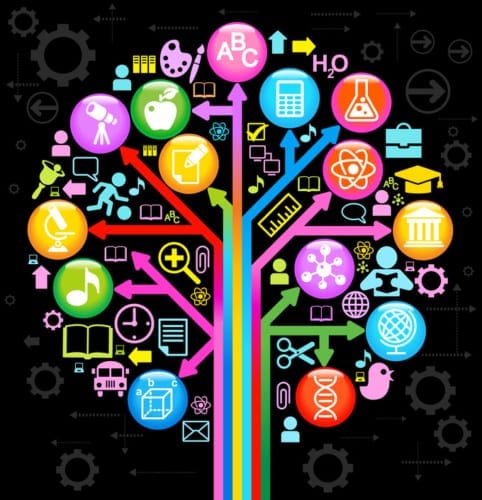Responsive Interventions Honor Successful Outcomes
by Toby J. Karten
“Good things come to those who wait,” but educators can never have a “wait-and-see attitude” that passively watches students struggle. The field of education requires a diversity of professional ingredients. This includes knowledge, collaboration, organization, compassion, reflection, and individualization. As a wedding cake has tiers, a process known as response to intervention (RTI) provides learners with needs-based multi tiered instruction. All students receive the essential universally designed core knowledge in Tier 1, and as needed, supplemental instruction in Tier 2, and more intensive instruction in Tier 3. Students are screened to determine their proficiency levels and then assessed at set intervals to continually capitalize on learner strengths.

RTI is an evolutionary process that assists students as they develop their behaviors and skills to become better readers, writers, and mathematicians. Its framework is designed to delete the frustrations for students who try to keep pace without the appropriate intervention. High expectations exist for all learners, within instructional tiers that acknowledge learner individuality. Progress occurs in increments in emotional, social, behavioral, and academic arenas. Cooperative play is preceded by parallel play. Sounds are associated with letters that become words, which form sentences that comprise paragraphs, essays, and novels. Before learners solve complex mathematical equations, they first count simple quantities and strengthen computational skills. RTI’s instructional tiers take into account that prior knowledge; skill sets, interest, motivation, and rates of learning vary.

Revisiting the wedding cake analogy, note that RTI is married to differentiation. Differentiation of instruction values the fact that learners require varying representations, engagements, actions, and expressions. Some students’ brains are not wired to read with automaticity, unless they receive multisensory instruction to associate phonemes with their sounds. Perhaps a student would prefer to create a skit or collage that demonstrates his or her knowledge of imperialism or the forces of motion, rather than write a three-paragraph essay. That skit and collage could very well include the same writing and research skills of the essay, but the engagement invites heightened motivation and interest to increase time on task and level of performance.
If a student listens to a math rap, such as one from Flocabulary on the order of operations, he or she appreciates the auditory accompaniment to better grasp the concept. A learner with attention issues often does not respond well to long lectures that require him or her to “sit and git,” but he or she may prefer to be part of intervention that includes a scavenger hunt. In this case, a worksheet’s requirements leap off the page. Hands on activities then translate to minds on learning!
 RTI’s interventions need to be accompanied with cognitive learner strategies. As example, effective learners know that if they receive learning accommodations, that is not an excuse to stop listening and learning, since they are active participants in the RTI process, regardless of the tiered level of intervention that they receive. Students, who exhibit increased cognitive buy-ins, are continually on a road that hones their skills. Effective learners know how to ask for help and how to interact and collaborate with peers and adults. Students then develop skills to shift gears as educators assist learners to navigate the curriculum.
RTI’s interventions need to be accompanied with cognitive learner strategies. As example, effective learners know that if they receive learning accommodations, that is not an excuse to stop listening and learning, since they are active participants in the RTI process, regardless of the tiered level of intervention that they receive. Students, who exhibit increased cognitive buy-ins, are continually on a road that hones their skills. Effective learners know how to ask for help and how to interact and collaborate with peers and adults. Students then develop skills to shift gears as educators assist learners to navigate the curriculum.
 Time well-allocated and accompanied by a set schedule of responsive intervention is a learner’s friend. The gains achieved are never identical ones for all learners. The tortoise and hare are seated in the same classroom, but a lion of a teacher in a group or pride of interventionists facilitates ongoing growth to nurture each learner’s skills and strengths. School staff collaborates with students and families to determine and deliver the effective instructional approaches. Bottom line is that responsive interventions offered within the RTI framework, honor successful classroom and life outcomes.
Time well-allocated and accompanied by a set schedule of responsive intervention is a learner’s friend. The gains achieved are never identical ones for all learners. The tortoise and hare are seated in the same classroom, but a lion of a teacher in a group or pride of interventionists facilitates ongoing growth to nurture each learner’s skills and strengths. School staff collaborates with students and families to determine and deliver the effective instructional approaches. Bottom line is that responsive interventions offered within the RTI framework, honor successful classroom and life outcomes.
Author
Toby Karten, a staff developer, instructional coach, educational consultant, author, adjunct professor, and inclusion specialist has taught populations of learners ranging from preschool to graduate level. Ms. Karten’s first publication, Inclusion Strategies That Work! Research-Based Methods for the Classroom is an international best seller, now in its third edition.
Other publications include, Inclusion & CCSS Supports for Students & Staff, Navigating the Core Curriculum, Building on the Strengths of Students With Special Needs, and Developing Effective Learners: RTI Strategies for Student Success. Toby is also a contributor to MyEd Expert. More information on how to advocate for students’ strengths is available online at Toby’s website.
Further Reading
- edCircuit – Special Ed: Redefining Inclusion Education
- THE Journal – 3 Keys to a One-Year Literacy Turnaround
- Education Week – Student Trauma Is Real. But Connection Can Heal.
